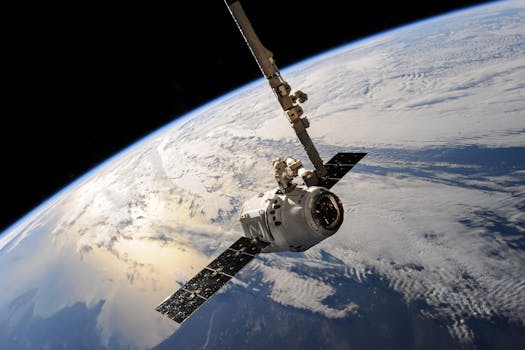The Future of Satellites: Revolutionizing Global Connectivity
The future of satellites is poised to revolutionize global connectivity, enabling faster and more reliable communication services. With advancements in space technology, satellites are becoming increasingly important for a wide range of applications, from navigation and remote sensing to communication and weather forecasting.

The Future of Satellites: Revolutionizing Global Connectivity
The future of satellites is poised to revolutionize global connectivity, enabling faster and more reliable communication services. With advancements in space technology, satellites are becoming increasingly important for a wide range of applications, from navigation and remote sensing to communication and weather forecasting. The use of satellites is expected to play a vital role in bridging the digital divide, providing internet access to underserved communities, and supporting the growth of the global economy.
Satellites have been in use for several decades, but recent advancements in technology have made them more efficient, cost-effective, and accessible. The development of small satellites, also known as CubeSats, has enabled the launch of multiple satellites at a lower cost, making it possible for more organizations and countries to participate in space exploration. Additionally, the use of reusable rockets has significantly reduced the cost of launching satellites into space, making it more feasible for companies to deploy constellations of satellites.
Advancements in Satellite Technology
One of the most significant advancements in satellite technology is the development of high-throughput satellites (HTS). These satellites use multiple spot beams to provide higher bandwidth and faster data speeds, enabling the delivery of high-quality video and internet services. HTS satellites are particularly useful for providing broadband services to remote and underserved areas, where traditional fiber-optic connections are not available.
Another area of advancement is in the development of satellite constellations. These constellations consist of multiple satellites that work together to provide global coverage and enable real-time communication. Satellite constellations are being used for a wide range of applications, including navigation, remote sensing, and communication. For example, the Global Positioning System (GPS) is a constellation of satellites that provides location information and timing signals to GPS receivers on the ground.
Applications of Satellites
Satellites have a wide range of applications, from navigation and remote sensing to communication and weather forecasting. Navigation satellites, such as GPS, provide location information and timing signals to GPS receivers on the ground. Remote sensing satellites, such as Landsat and MODIS, provide images of the Earth’s surface, enabling the monitoring of climate change, deforestation, and natural disasters.
Communication satellites, such as geostationary satellites, provide television broadcasting, internet services, and mobile connectivity. Weather forecasting satellites, such as GOES and Himawari, provide images of the Earth’s atmosphere, enabling the prediction of weather patterns and storms. Satellites are also used for scientific research, including the study of the Earth’s magnetic field, the solar wind, and the universe.
Challenges and Opportunities
Despite the many advantages of satellites, there are also several challenges and opportunities that need to be addressed. One of the major challenges is the increasing amount of space debris in Earth’s orbit, which can pose a risk to operational satellites and other space vehicles. Another challenge is the need for more efficient and cost-effective launch systems, as well as the development of sustainable and environmentally friendly propulsion systems.
There are also opportunities for innovation and entrepreneurship in the satellite industry. For example, the development of small satellites and satellite constellations has enabled the creation of new business models and services, such as satellite-based internet services and Earth observation platforms. Additionally, the use of satellites for scientific research and exploration is expected to continue to grow, enabling new discoveries and advancements in our understanding of the universe.
